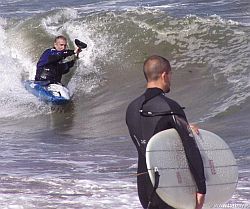 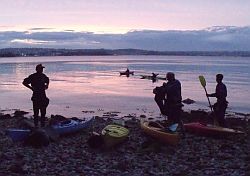 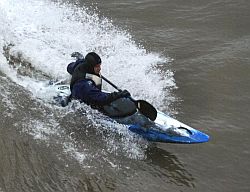 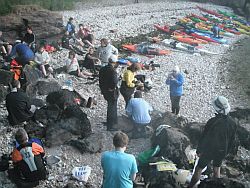 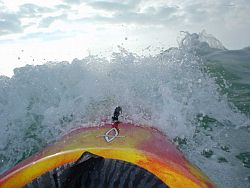 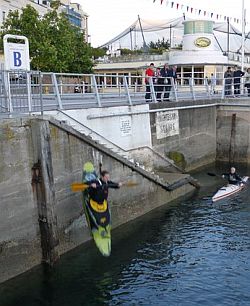 |
Predicting Surf in Torbay
With thanks to Dave White (Club Member) for this information. It was originally written as a post in our Members forum and so is one man's personal opinion but as we find it useful we've stolen it and put it here so everyone can benefit from his wisdom!
Here are some useful links to predict / check for surf in the bay.
http://www.channelcoast.org/data_manage ... /?chart=85
This is a live link to a wave buoy out in the bay (about a mile off shore?) which measures any swell height and direction. It's used by the harbour office and sailros, but is publically available. The top chart shows the swell height. You can check the last day, week, etc (drop down down at top). This is the swell height at sea, measured from peak to peak of passing swell waves. Depending on the wave period (second chart) this usually equates to a breaking wave of about 50 - 75% of the swell height, depending on the beach, height of tide (I feel like giving some disclaimer here..."Remember swell can go up as well as down, and past information is not an indicator of future performance" !!!!) and wave direction, but typically it's about 50-75%.
Typically the bay needs 1.5m or more to get any decent breaking wave. I say this from keeping an eye on the wave buoy for a year or so, but am no expert!
The wave period is the time between peaks, or troughs, of the swell waves. The longer, the better and more powerful the breaking waves. Typically it's about 6 seconds in Torbay, which is on the weak side. If the swell period ever reaches 10 seconds plus then the breaking wave will be the hieght of the swell, or higher still. But because Torbay's waves are wind generated (as opposed to a storm miles out in the Atlantic / Bay of Biscay which works for Bantham) the wave period is normally quite short.
The next chart is wave direction. 90 degrees is east of course. Paignton faces east so picks up the swell nicely! But it can get blown out and the waves turn into soup / foam and get messy. But, if you go around to Tor Abbey, which faces SE, it's cleaner (at high tide you won't see the rocks out at sea!!!). Better still is if the wind has been easterly for a few days and then it turns off shore, back to prevailing SW's. The easterly swell will continue for a day max but if the timing is right it results in nice clean sets.
Not sure what the last chart is all about!
Metcheck.com predicts the winds and speed. Again from watching this for a while it needs to be blowing fast, 10 mph plus, to give us any decent swell. Saturday was just 8 mph, hence wave buoy dropped to 1 m and at hgh tide there was no surf. Overnight the wind blew 18 mph and the wave buoy picked up to 2.5 metres. Better! So need to check wind direction and speed. I reckon it takes about 6 hours of strong easterlies to give us swell. Not long really, so it can change over the day. Once the easterlies end we may get a day max before the swell disappears.
Hope it helps! I may sound like I know what I'm talking about but accept there is a big difference between knowing about it and being able to surf good! I am not saying I can do the latter well!
Teignmout wave bouy
http://www.channelcoast.org/data_manage ... sp_option=
Web cams
Try www.harbour.co.uk/beach-surfcam.htm for a shot of Paignton sea front or www.torbaysurfing.co.uk have a link to loads of web cams, half of which break down a lot!
If you're lucky enough to live close to the sea, forget all of the above, as you can walk down. If, like me, you live in land a bit then you can check the wave buoy and decide whether to take the kayak to work or not.
Bantham use magicseaweed.com but don't use if for Paignton as it's mostly wrong. The torbay wave buoy does not lie!
... as a follow up, in reply to the question:
When's the best time to surf?
came the reply ...
The lower the better but ideally avoiding the very low tide as the waves will close out, ie dump, at low tide. I tend to work on mid tide and mid tide on the push as opposed to falling tide will have a bit more energy. Most waves will disappear, or reduce in height, on a flood tide. Basically waves roll under water, in part, and trip over themselves and are pushed up and then break, when the depth of the water is about 1.5 times the swell. So, in deep water, they won't break, and therefore in low water they break more! So in short, mid tide is best and if you are in for a couple of hours you are gonna get mid to low tide.
Hope that helps ...
|
|






